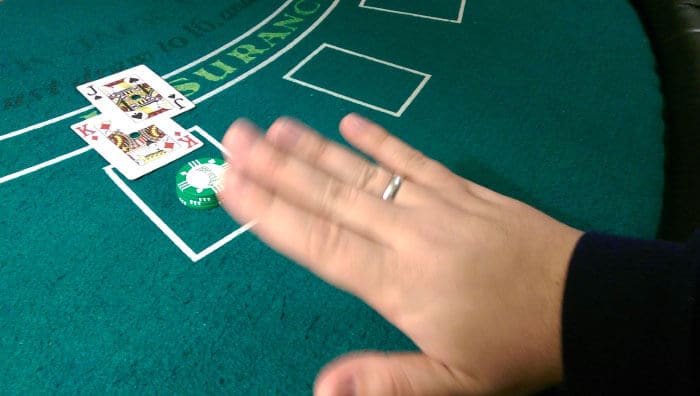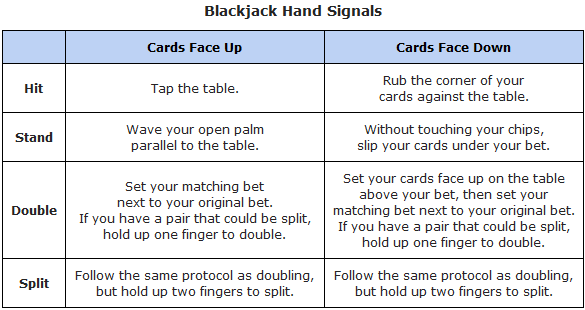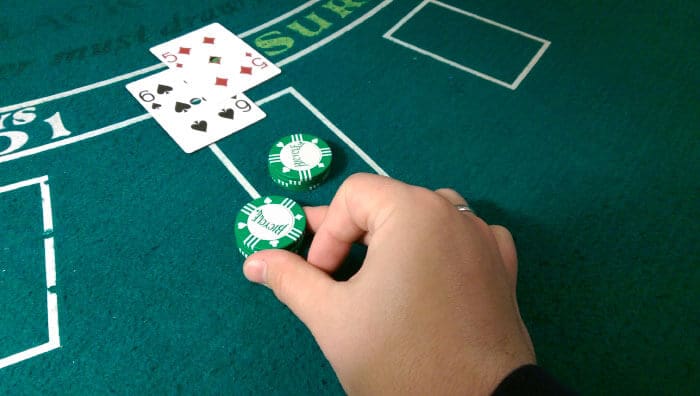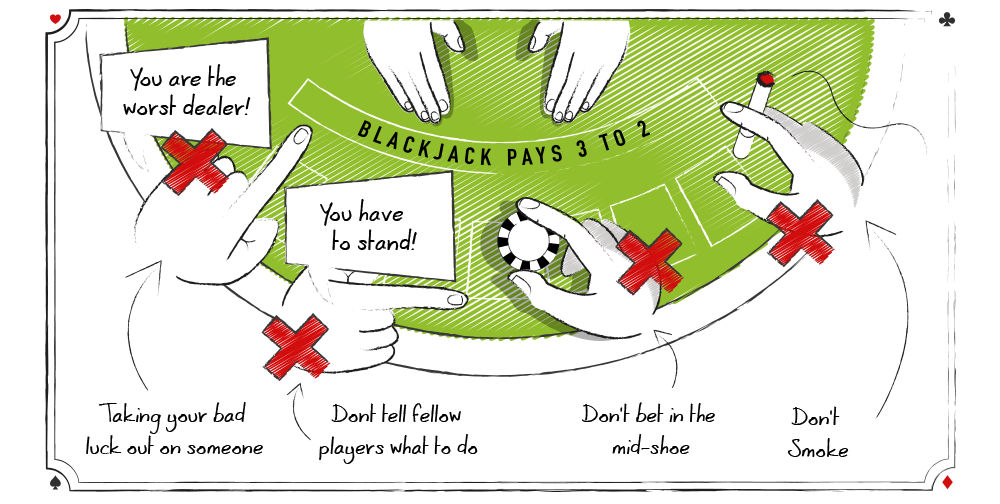Blackjack Hand Signals
In a noisy casino environment full of distractions, it is important that you can convey your decisions regarding your hand to the dealer without any misunderstandings. In order to show the dealer how you intend to proceed (and for that decision to show clearly on casino security cameras for reference if needed), special hand signals have developed.


Blackjack also has a number of variations like “slots”, “zero dice”two-card stud”. One of the popular variations is “twister”. To understand how to deal blackjack, you have to learn about these variations. Number: Firstly, one must understand the concept of spades. And in this case, the wrong hand signals can make you look like a fool, or even make you lose if you are playing for real money. So before sitting at a blackjack table, we advise you to learn some basic hand signals. Hand signals come into play once the dealer has dealt the 2 cards facedown to all the players.
Face Up, Face Down
In order to know what signals to make and how to handle the cards, it is necessary to know whether you are playing a London Deal or a Nevada Deal game. Despite the names, these types of deal are not location-specific. That is to say, you are likely to find the London Deal in Nevada and vice versa. The difference between the two is easy to tell, however, and the appropriate manner to handle the cards is pretty straightforward.
London Deal
In a London Deal game the cards are dealt face up. Seeing as this makes it unnecessary for the players to handle their cards, players are not permitted to touch their cards at any time during the game to reduce the risk of players scratching or otherwise marking the cards. This means that touching your cards will make you look like a potential cheater, and will at the very least earn you a reprimand from the dealer. Bearing this in mind, hand signals in a London Deal game are always made without touching the card.
Nevada Deal
When playing a Nevada Deal, your cards will be dealt face down. Since you will need to pick up your cards to see what you have been dealt, players are allowed to touch their cards. However, a number rules apply here: Only ever touch your cards with one hand, never pick them up with two hands. If you choose to pick up your cards, always keep them above the table and in plain sight. Avoid touching your cards more than is necessary.
Blackjack Hand Sign

Hand Signals

Now that you know how to handle the cards, it’s time to learn the appropriate hand signals for both types of deal. These, again, are fairly self-explanatory.
London Deal Hand Signals
- Hit – Point at your cards or tap the table behind your cards. You can also brush your finger over the table behind your cards, making a “come here” gesture on the surface of the table.
- Stand – Wave your hand above your cards as if to say “no”. Wave your hand from side to side from the wrist without moving the rest of your arm.
- Double – First add your second bet as a separate stack next to your original bet, making sure never to touch your original bet. Then hold up one finger.
- Split – Just like doubling down, first add your second bet as a separate stack next to your original bet, making sure not to touch your original bet. Then hold up two fingers.
Nevada Deal Hand Signals
Hit Or Stand Blackjack Practice

Blackjack Hand Signal Surrender
- Hit – You can either scrape the table lightly behind you cards, making a “come here” gesture, or, if you are holding your cards, you can brush the table with your cards, also making a “come here” movement.
- Stand – You can wave your hand over your cards like in a London Deal game, or, what is more commonly done, gently slide your cards under your chips while taking care not to move your chips.
- Double – Turn your cards over so that they are face up. Then add your second bet in a separate stack next to your original bet, taking care not to touch the original stack, and hold up one finger.
- Split – These sequence of signals is, again, the same as the doubling down signal, except instead of raising one finger, you raise two.